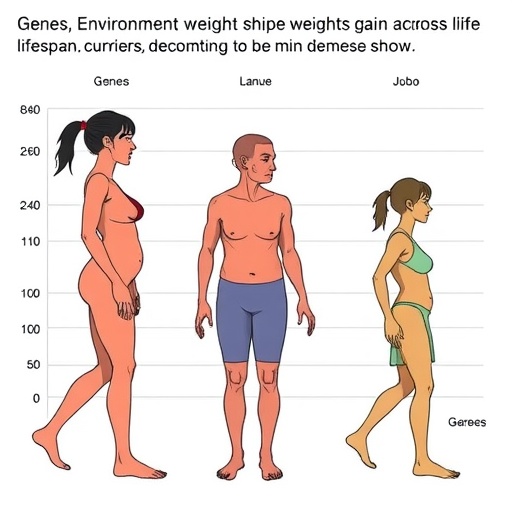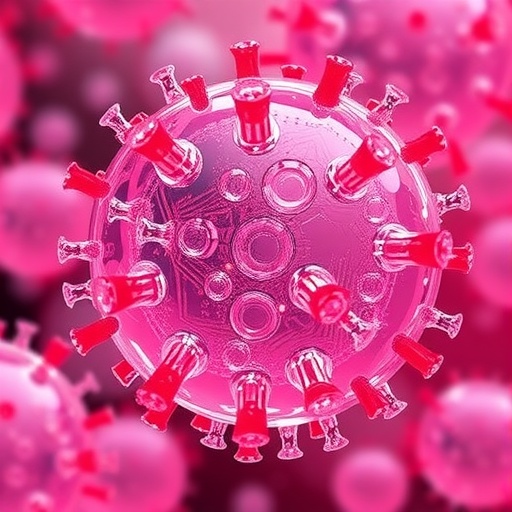In recent years, the widespread use of personal care products (PCPs) has stirred growing concern among the scientific community, particularly due to their potential endocrine-disrupting properties. While the implications of these chemical exposures have been extensively studied in women—especially concerning hormone-sensitive cancers such as breast and ovarian cancer—there remains a significant gap in understanding their influence on hormone-sensitive cancers in men. A new groundbreaking study led by Torres-Sánchez and colleagues aims to bridge this gap, examining the relationship between personal care product use and prostate cancer risk in a major urban population in Mexico City.
This pioneering research adopts a case-control design, meticulously exploring exposure patterns to PCPs among men diagnosed with prostate cancer compared to matched controls without the disease. The prostate gland is highly responsive to hormonal stimuli, primarily androgens, but emerging evidence suggests that environmental hormone disruptors could modulate cellular signaling pathways critical for prostate carcinogenesis. Personal care products, ranging from aftershaves and deodorants to colognes and hair treatments, often contain compounds such as parabens, phthalates, and triclosan—chemicals known to interfere with androgen and estrogen receptors. The current investigation breaks new ground by mapping out the prevalence and frequency of these exposures within a diverse demographic that has been underrepresented in environmental epidemiology.
The researchers conducted in-depth interviews and administered standardized questionnaires to over 1,000 male participants, enabling a comprehensive quantification of PCP use variables—including type, frequency, and duration. Their statistical models revealed a compelling association: men exhibiting higher intensity and longer duration of exposure to certain PCP formulations demonstrated an increased odds ratio of developing prostate cancer. This finding poses provocative questions about the biochemical mechanisms at play, suggesting that chronic exposure to endocrine-disrupting chemicals in daily life may contribute to the initiation or progression of prostate malignancies.
At a molecular level, many PCP ingredients possess the ability to mimic or antagonize natural hormone functions, disrupting homeostatic endocrine signaling. Cellular assays performed as part of the study underscore how some of these compounds can alter androgen receptor-mediated gene transcription and potentially promote aberrant cellular proliferation. This mechanistic insight aligns with epidemiological data indicating an elevated cancer risk in populations with sustained PCP usage. The study’s integrative approach synergizes epidemiology with molecular toxicology, providing a more holistic understanding of how lifestyle factors and environmental toxicants converge in prostate cancer etiology.
Furthermore, the authors emphasize the significance of exposure timing, noting that early adulthood and middle age may represent critical windows during which PCP-related endocrine disruption could have maximal effects. Longitudinal data collected retrospectively indicated that men who began intensive PCP use before 40 had an even higher relative risk compared to those with later or less frequent exposure. This temporal dimension introduces a precautionary perspective, emphasizing the need for public health strategies that address cumulative lifetime exposure to these chemicals.
Geographically and culturally, the study offers unique insights given Mexico City’s distinct environmental and socioeconomic context. Urban residents in this region may encounter varying formulations of PCPs, sometimes with less stringent regulatory oversight on chemical ingredients compared to some Western countries. Consequently, these findings could reflect compounded risks attributable both to product composition and usage patterns reflective of localized cultural norms. Such considerations highlight the importance of tailoring public health guidance to regional specificities rather than relying solely on data from North American and European cohorts.
While the findings of Torres-Sánchez et al. mark a significant advancement, the authors caution that causality cannot be definitively established through observational methods alone. Unmeasured confounding, recall bias, and variations in individual metabolic susceptibility may influence the observed associations. Nonetheless, the study’s rigorous design and comprehensive exposure assessment strengthen the argument for considering PCP exposure as a plausible risk factor worth further investigation through prospective and experimental frameworks.
From a regulatory perspective, this study contributes to the growing body of literature advocating for tighter scrutiny and reformulation of PCPs to minimize endocrine-disrupting potential. Policymakers and manufacturers may be urged to prioritize safer alternatives and to enhance transparency in product labeling, empowering consumers to make informed decisions about their personal care routines. Public health campaigns that raise awareness about the possible links between everyday cosmetic products and prostate health could also stimulate behavioral changes conducive to risk reduction.
Ultimately, this research underscores the intricate interplay between environment, lifestyle, and human biology in shaping cancer risk profiles. The complex mixtures of chemicals in PCPs likely interact with endogenous hormonal milieu in ways that are not yet fully understood, warranting multidisciplinary collaborations between epidemiologists, toxicologists, and clinicians to unravel these pathways. By illuminating a previously underexplored avenue, the study paves the way for future investigations that may lead to novel preventive strategies against hormone-driven cancers in men.
The implications extend beyond prostate cancer, as many endocrine disruptors have been implicated in other male reproductive disorders, including infertility and testicular dysgenesis syndrome. The personal care product industry represents a ubiquitous, modifiable source of these exposures, rendering this an actionable target for cancer prevention efforts. This research may prove seminal in guiding future risk assessments and health advisories worldwide.
In conclusion, the evidence presented by Torres-Sánchez and colleagues provides a provocative new perspective on the carcinogenic potential of personal care product exposure in men. Their case-control study in Mexico City offers robust epidemiological data that warrant urgent attention from researchers, clinicians, regulatory bodies, and consumers alike. As the global population continues to embrace modern grooming habits, the balance between aesthetic preferences and chemical safety must be carefully evaluated to safeguard men’s hormonal health and reduce the burden of prostate cancer in the decades to come.
—
Subject of Research:
Exposure patterns to personal care products and their association with prostate cancer risk in men.
Article Title:
Personal care products exposure patterns and prostate cancer: evidence from a case-control study in Mexico City.
Article References:
Torres-Sánchez, L., Hernández-Pérez, J.G., Lopez, D.S. et al. Personal care products exposure patterns and prostate cancer: evidence from a case-control study in Mexico City. J Expo Sci Environ Epidemiol (2025). https://doi.org/10.1038/s41370-025-00772-4
Image Credits: AI Generated
DOI:
https://doi.org/10.1038/s41370-025-00772-4
Tags: case-control study on prostate cancerchemical exposure and health outcomesendocrine disruptors in menenvironmental influences on prostate cancerhormone-sensitive cancer researchimpact of personal care products on men’s healthparabens and phthalates in cosmeticspersonal care products and prostate cancerprostate cancer risk factors in Mexicoprostate carcinogenesis and hormone modulationunderstanding prostate cancer in diverse demographicsurban population health studies





